Baileya pleniradiata, Woolly Desert Marigold
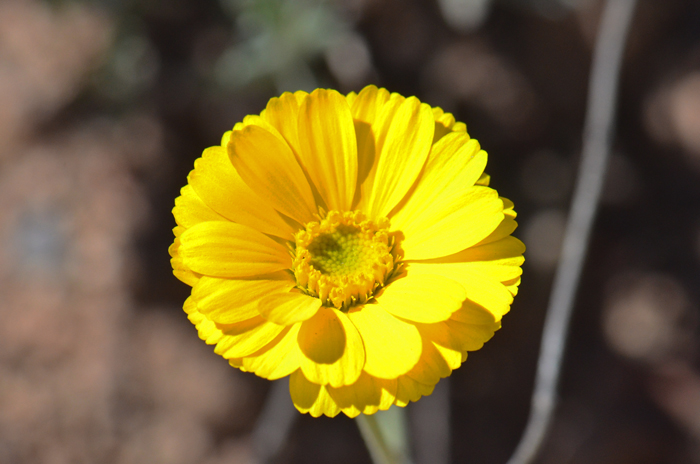

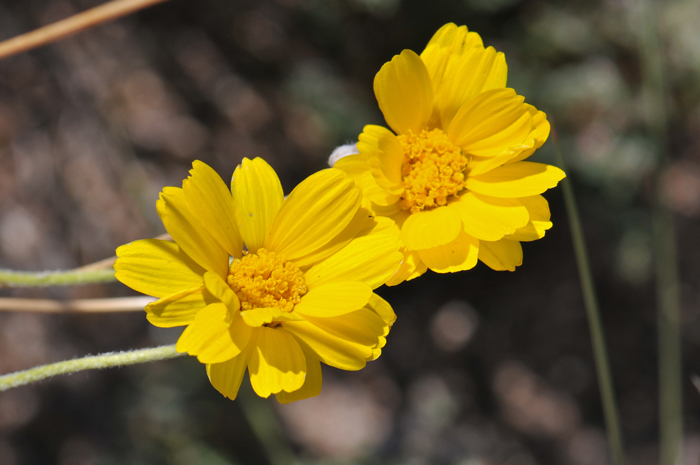
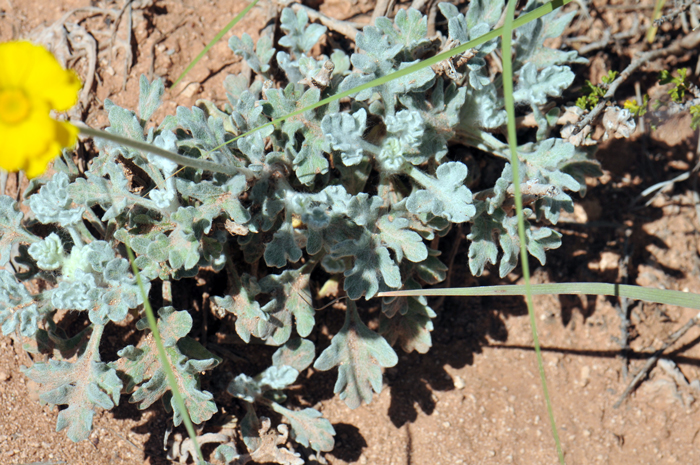
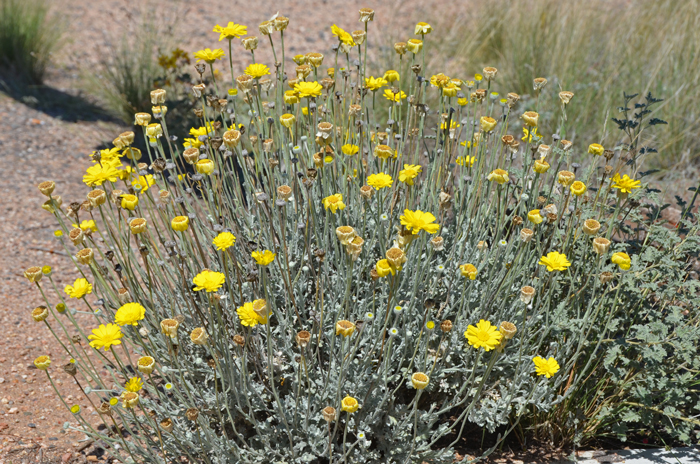
Scientific Name: Baileya pleniradiata
Common Name: Woolly Desert Marigold
Also Called: Desertmarigold Baileya, Woolly Desert-marigold
Family: Asteraceae, Sunflower Family
Synonyms: (Baileya multiradiata var. pleniradiata, Baileya perennis)
Status: Native
Duration: Annual, biennial or short-lived perennial.
Size: Up to 18 inches (46 cm) more or less.
Growth Form: Forb/herb; this species forms clumps of gray woolly plants covered with dense, fine grayish-white hairs, (tomentose); branching at base.
Leaves: Greenish-gray or silvery-green leaves; mostly basal and on lower stems, woolly or canescent-tomentose; lower leaf blades pinnately lobed, upper leaf blade lobes reducing; basal leaves wither early.
Flower Color: Bright yellow, showy, up to 2 inches (5 cm); single flower heads (solitary); flowering stems (inflorescence) on long 5 inch (12 cm) naked stems; bracts or phyllaries have soft woolly hairs (floccose)-(tomentose); heads with both ray (20 to 40 tips slightly 3-toothed) and disk (40 to 50) florets (radiate); fruit is a cypsela which does not have a pappus.
Flowering Season: February to June, again October to November (2 blooming seasons)
Elevation: 300 to 6,000 feet (100-1,800 m)
Habitat Preferences: Open sunny areas, plains, mesas, hillsides, roadsides, sandy soils and gravelly washes.
Recorded Range: Woolly Desert Marigold is found in the southwest United States in AZ, CA, NM, NV, UT and in northern Baja California and northwest Mexico. It is found throughout most of Arizona.
North America & US County Distribution Map for Baileya pleniradiata.
North America species range map for Baileya pleniradiata:
North American range map courtesy of Virginia Tech, Dept. of Forest Resources & Environmental Conservation
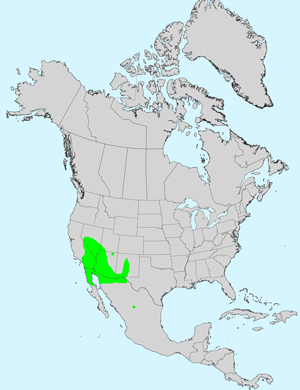
U.S. Weed Information: Unknown
Invasive/Noxious Weed Information: Unknown
Wetland Indicator: Unknown
Threatened/Endangered Information: Unknown
The genus Baileya was published by William Henry Harvey and Asa Gray in 1848.
In the Southwestern United States: Arizona, California and Utah each have 3 species of Baileya, Nevada and New Mexico each have 2 species, Texas has 1 species. All data approximate and subject to revision.
Comments: Woolly Desert Marigold is a yellow, showy daisy-like flower throughout much of Arizona but more common in the southern part of the state. It is very similar and somewhat difficult to distinguish from its closely related sister Desert Marigold, Baileya multiradiata, Woolly Desert Marigold however has shorter, more oval ray flowers and fewer disk flowers. According to Flora of North America, both species can be observed in the area and hybrids have not been recorded. I have also observed this to be the case.
In Southwestern Desert Flora also see Woolly Desert Marigold, Baileya multiradiata.
The genus Baileya was published by William Henry Harvey and Asa Gray in 1848.
The species epithet "pleniradiata" (pleni:) from the Latin for "full-rayed" and (radia'ta/radia'tum:) meaning spreading out like rays, usually the petals of florets; thus a reference to the many spreading full-rayed petals.

